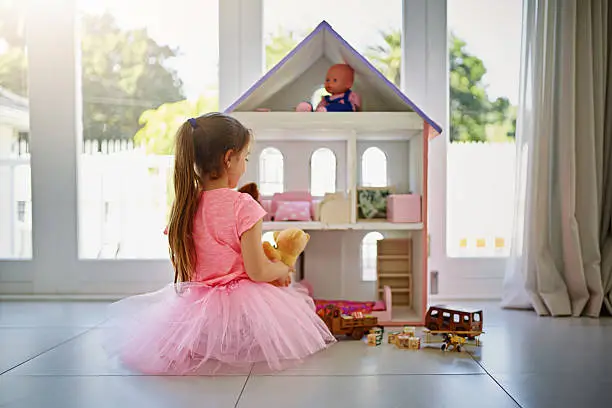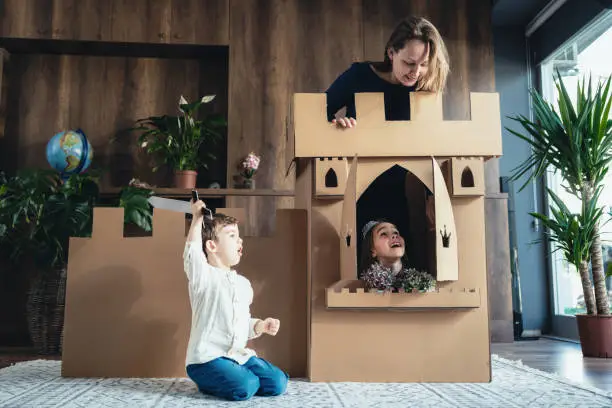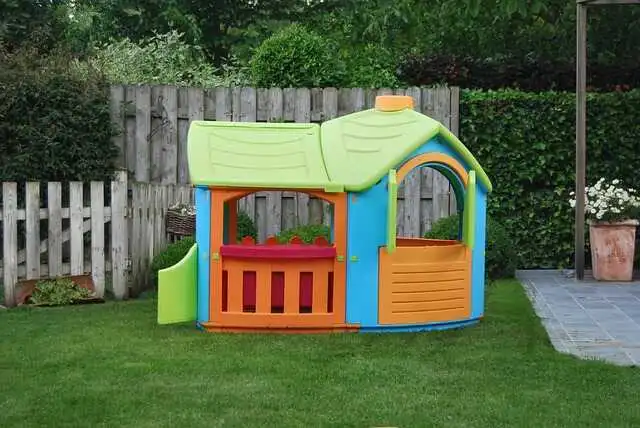In today’s digital-driven world, kids spend an average of 4–6 hours daily on screens (Common Sense Media, 2024). While technology has its benefits, excessive screen time often reduces opportunities for imaginative play. That’s where a Toyhouse comes in—a magical play space designed to spark creativity, imagination, and endless fun. In this guide, we’ll explore what a Toyhouse is, why it matters, and how parents can design one for their children.
What is a Toyhouse?

A Toyhouse is more than just a play area—it’s a creative haven where kids can explore, imagine, and build their own little worlds. From castles and jungles to pirate ships and space stations, a Toyhouse provides an open-ended environment where children can express themselves freely while learning essential life skills.
Benefits of a Toyhouse
Studies show that imaginative play improves cognitive flexibility and problem-solving skills by up to 33% (Harvard Center on the Developing Child). According to the American Academy of Pediatrics, pretend play also supports emotional growth, language development, and empathy.
Key benefits include:
- Encourages creativity and storytelling
- Improves fine motor skills through hands-on building
- Enhances social skills during group play
- Strengthens parent-child bonding
- Provides a safe, fun environment away from screens
Planning and Designing Your Toyhouse

Before building, plan carefully:
- Determine Location First: Decide if your Toyhouse will be indoors or outdoors, as this critically impacts material choice, weatherproofing needs, and size limitations.
- Choose child-friendly colors: Bright tones like yellow, green, and blue stimulate creativity. Research suggests certain colors, like blue, can increase focus, while yellow encourages optimism.
- Involve your child: Kids who take part in designing their play space show a 20% higher engagement in using it (Research in child psychology suggests…).
- Budget wisely: A DIY Toyhouse can cost between $\$50-\$200$, while pre-made wooden models can range from $\$300-\$1,000$, depending on size and features.
Gathering Materials
Select safe, durable, and cost-effective materials:
- Recycled cardboard or plywood (eco-friendly & affordable)
- Non-toxic paints for vibrant, safe designs
- Basic tools like a measuring tape, wood, a hammer, and glue
- Optional: LED fairy lights, fabric curtains, or soft rugs to enhance coziness
Building the Frame and Structure
Sketch the design on paper or digitally before starting.
- Build a stable base with enough play space for activities.
- Add real-house elements like doors, windows, or mini furniture.
- Ensure proper ventilation and lighting to make it safe and welcoming.
- Practicality Tip: If building indoors, consider a modular design or hinges so the frame can be partially disassembled or folded flat for easier storage or moving.
Personalizing Your Toyhouse: Ideas to Spark Imagination
This is where creativity shines:
- Create cozy corners for reading or pretend play.
- Decorate with your child’s photos and favorite toys.
- Add interactive features like a chalkboard, a play telephone, or themed zones (such as a castle, a kitchen, or a spaceship).
- Consider STEM-themed areas like a mini science corner, which can boost curiosity in early learning.
- Enhance Sensory Play: Incorporate different textures, like soft rugs, crinkly fabrics, or a small bin of dried beans or rice for hands-on sensory exploration, especially for toddlers.
Safety Considerations
Safety should always be the top priority:
- Avoid sharp objects and unstable structures.
- Use child-safe paints and finishes.
- Inspect regularly for wear and tear.
- Childproof the space with soft mats, rounded edges, and safe lighting.
According to a CDC report, over 200,000 children under 14 visit emergency rooms each year due to playground-related injuries. Proper safety checks can significantly reduce risks in home play spaces like Toyhouses.
Read also: Rhyme Without Reason: Funniest Costume Ideas Ever!
Making It Magical

Reveal the Toyhouse with excitement! Join your child in pretend play, storytelling, and adventures. A Toyhouse isn’t just a structure—it’s a memory-making space that strengthens parent-child bonds. Research shows that parents who engage in play with their kids contribute to higher self-esteem and emotional stability in children.
For more parenting tips, you can also explore resources from the Child Mind Institute and the American Academy of Pediatrics.
FAQs
Q1. How long does it take to build a Toyhouse?
It usually takes 1–2 weeks, depending on the design and time invested daily. Pre-fabricated models can be assembled in 2–3 hours.
Q2. What are cost-effective materials I can use?
Recycled cardboard, plywood, and fabric are budget-friendly options. Studies show that repurposed play materials can be just as effective for learning.
Q3. Do I need building experience?
Not at all! With simple tools, online guides, and creativity, anyone can build a Toyhouse. DIY builds also encourage children to see the value of creating with their hands.
Q4. Why is a Toyhouse important for kids?
It helps children develop problem-solving, social interaction, and imaginative thinking skills. According to UNICEF, play is one of the most important ways children learn and grow.
Read also: Who Invented WiFi? Fun Facts Every Kid Should Know
Conclusion
Building a Toyhouse is a labor of love that goes beyond play. With the right planning, creativity, and safety measures, you can design a magical space where your child dreams, explores, and grows. Whether big or small, a Toyhouse will always be a place where imagination knows no bounds.
Read also: Rhyme Without Reason Ideas: Fun, Easy & Hilarious Costume Inspiration
